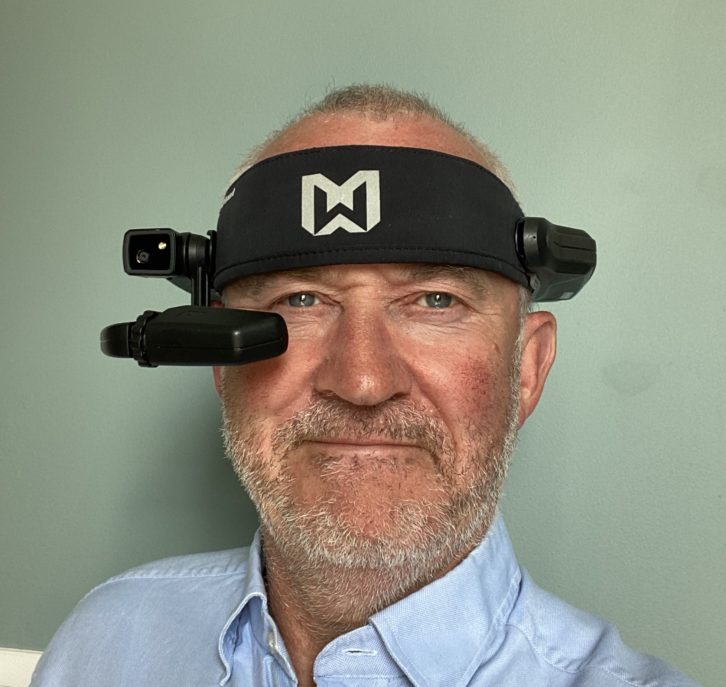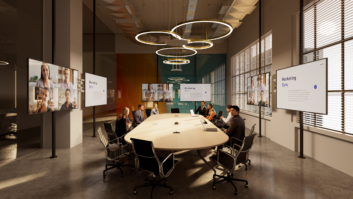 The metaverse is the tech buzzword of 2022. If you’re not yet familiar with what the term means, it is a vision of the internet of tomorrow: a digital universe that enables us to connect with each other, and things, virtually like never before. Its promise has raised much investment among consumer and enterprise brands. Given its potential to transform the way we live and work, a question worth asking is what might this mean for the AV industry? Could there be an industrial metaverse for the enterprise?
The metaverse is the tech buzzword of 2022. If you’re not yet familiar with what the term means, it is a vision of the internet of tomorrow: a digital universe that enables us to connect with each other, and things, virtually like never before. Its promise has raised much investment among consumer and enterprise brands. Given its potential to transform the way we live and work, a question worth asking is what might this mean for the AV industry? Could there be an industrial metaverse for the enterprise?
In manufacturing, construction, energy, healthcare and others, the impact of the industrial metaverse has the potential to be staggering. It could provide the means to carry out even more tasks remotely, reducing emissions, driving sustainability and resulting in a workforce that’s even more connected and engaged compared to today’s remote collaboration calls with an expert. Additionally, it could give frontline workers the opportunity to familiarise themselves with the real-world ahead of being there in person.
For AV and IT system integrators considering the technologies needed to deliver the metaverse experience, they should look to recent developments in the field of Extended Reality (XR). XR is a broad term that includes immersive learning technologies such as virtual reality, augmented reality, mixed reality and assisted reality. These XR technologies won’t replace people, but rather empower and elevate them to have data at their fingertips to help them improve their work experience – and productivity.
Virtual Reality (VR), lies at one end of the XR spectrum, capable of delivering highly immersive metaverse experiences through which the user predominantly sees and hears what is in the digital world. VR immerses the user in a virtual world, so that everything they see (and most of what they hear) are a mix of images or audio generated by the VR system.
Augmented Reality (AR) and Mixed Reality (MR) lie in the middle of the XR technology spectrum, in which the user augments or mixes their experience of the physical world with video, images, audio, and other digital information. This technology brings together the idea of the metaverse with the real world, delivering to the user a hybrid physical and virtual experience.
Assisted reality, a newer and less known XR technology, lies on the opposite end of the XR spectrum than VR. Unlike VR, assisted reality technologies provide the user with close to complete situational awareness, adding in digital content and experiences designed to only “assist” the user with their physical task. The user can consume information and collaborate with others, but these experiences are intentionally separated from the user’s physical reality to keep the user present and mindful of his/her surroundings.
In the future, assisted reality may provide a small opening into the industrial metaverse that the user can quickly look or step away from whenever they need to. The technology is best suited for remote expert guidance, digital workflow, field service, audit and inspection and other use cases where a reality-first, virtual-second experience is required. Examples of such use cases include a frontline-worker on a factory floor receiving guidance on how to repair a machine from a remote expert, a refinery worker calibrating a new measurement device with the device’s vendor, or a field-service technician using a workflow application to set up a new piece of equipment at a worksite.
Assisted reality technologies are typically appropriate for workers that must keep their field of vision free to prioritise situational awareness. This is typical of front-line workers across many industries who work alongside or with machines – from manufacturing systems on the plant floor, to material moving machines in the warehouse, to complex, potentially hazardous systems located in the field like drilling equipment on an offshore oil platform.
Assisted reality solutions need to provide users with hands-free control of their experience via voice command capabilities uniquely designed for high noise environments. In addition, with safety a baseline imperative, assisted reality technology must integrate with PPE (especially hard hats, hearing and eye protection). At the same time, these assisted reality solutions must be comfortable and powered to enable all-shift device use.
To explore these ideas, we recently held a roundtable panel discussion on the vision of the industrial metaverse with some of the biggest thinkers in the XR space. By the end of the conversation, it became apparent that when the metaverse becomes more prevalent, if you’re not a connected worker, you’ll be a disadvantaged worker and you won’t have the same ability to be productive.
With this in mind, AV integrators must begin to study and offer XR technologies as a gateway into the industrial metaverse. Then, no matter what becomes of the industrial metaverse, or when the vision will be fully realised, companies will reduce the learning curve and manage the change with foresight.







